For the third and final installment of the Underrated Beneficial Arthropods series, I will be talking about a group of organisms that is arguably one of the least recognized and most underappreciated when it comes to beneficials. Often doing most of their work ‘behind the scenes’ the nutrient cyclers, more familiarly referred to as decomposers or saprophytes, play a crucial role in our landscapes, one that is equally as important as that of pollinators and natural enemies. Although one of the more famous examples of nutrient cyclers that many gardeners are fond of are earthworms, since these are not arthropods I will not be focusing on them in this post. (I am, however, planning on dedicating an entire post specifically to earthworms, so stay tuned for that).
According to Galente and Marcos-Garcia, 90% of the organic matter produced by green plants in terrestrial ecosystems is not consumed. The arthropods in this category provide essential ecosystem services by breaking down materials such as waste, dead plants and animals and redistributing nutrients in the soil and making them available to the plants and other primary producers (which is why they are referred to as ‘nutrient cyclers’). Although it’s not a very glamorous job nutrient cycling is essential to a well-functioning ecosystem, without which, the earth would be covered in dead plants and animals.

Like the previous posts in this series, I will be organizing this post by group of arthropods, and highlighting some of the most notable examples of nutrient cyclers in each group. This will not be an exhaustive list of all the nutrient cycling arthropods but I will include resources at the end if you want to continue to explore this topic further.
Beetles
Containing dead plant, dung and carrion (decaying animals) feeding groups, beetles (Order: Coleoptera) run the gamut of nutrient cycling roles. Some of the most well-known in this group include the charismatic black and yellow or orange carrion beetles and burying beetles (Family: Silphidae) who bury small animal carcasses into the soil, lay their eggs on them, and allow their larvae to feed on the carcasses.
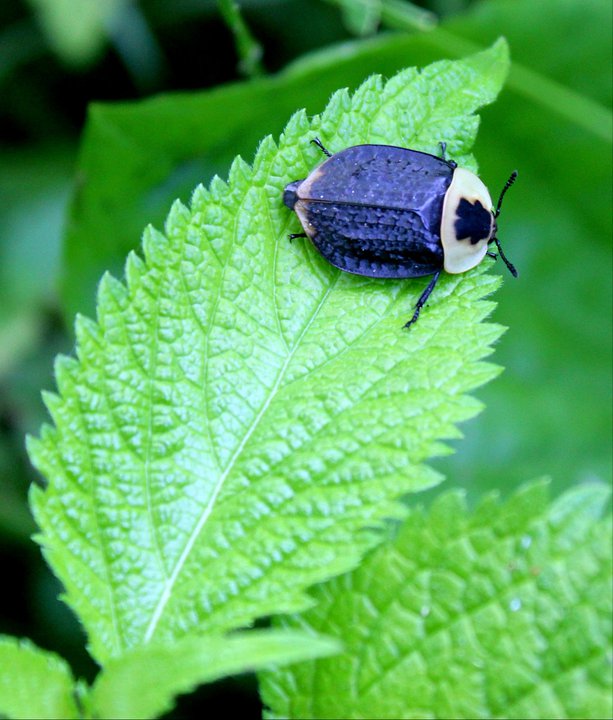
Other well-known decomposers in this group include dung beetles (Family: Scarabaeidae) which consume the feces of other animals. Due to the fact that these dung beetles process a significant amount of cattle dung and contribute greatly to the reduction of fouled forage from the accumulation of dung in livestock landscapes, Losey and Vaughan (2006) estimated the financial value of this reduction of forage fouling to be $122 million. They also play a significant role in reducing the amount of nitrogen lost to the atmosphere if dung was left on the surface to dry. By burying this dung the nitrogen is integrated into the soil making it available to plants. Sap beetles (Family: Nitidulidae) are just one example of beetles that feed on a variety of overripe, damaged, or decomposing fruit and vegetation (which may be a context that many gardeners would see them in). There are also several other beetles that shred dead vegetation such as leaflitter, bore into wood, and help create the layer of organic matter (humus) on the soil surface.
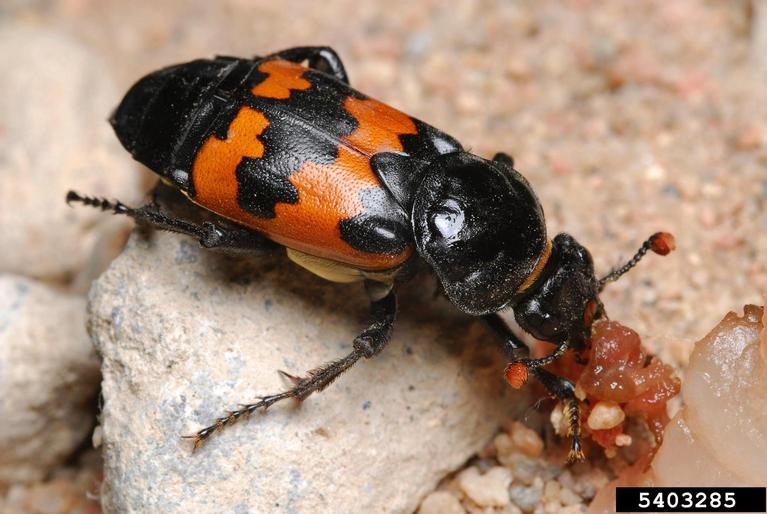
Flies
Flies (Order: Diptera) also contain all the categories of nutrient cyclers- from carrion feeding to decaying vegetation and waste. Some of the most famous flies in this category are the ones that play an important role in decomposing carcasses and, as such, are important in forensic entomology. Blow flies (Family: Calliphoridae) and flesh flies (Family: Sarcophagidae) are two of the most important forensic fly families. Phorid flies (Family: Phoridae) feed on a variety of decaying plants and animals. Crane fly (Family: Tipulidae) aquatic larvae are also well-known decomposers that feed on decaying vegetation and leaf debris. Although a few species of fruit flies (Family: Drosophilidae and Tephritidae) can be important agricultural pests, other species in this group feed primarily on rotting fruit. When indoors many of these groups of flies can be a nuisance and also transmit bacteria from the surfaces on which they were feeding so controlling them in indoors is often important.
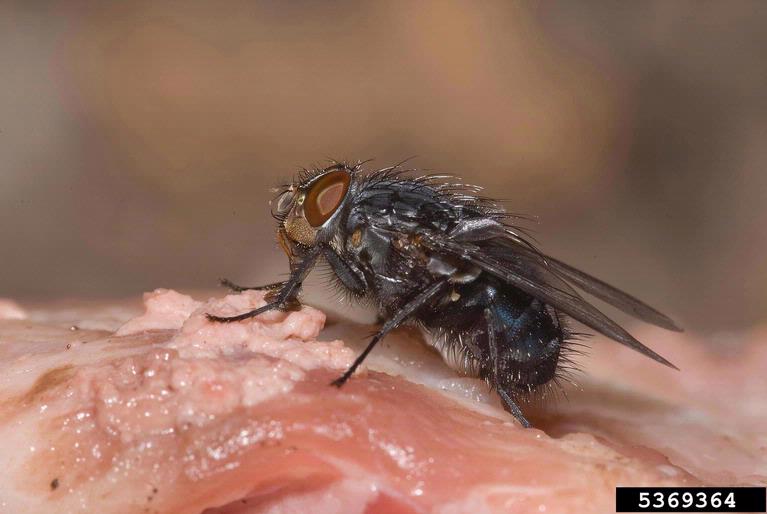
Cockroaches
Cockroaches (Order: Blattodea) often get painted with a broad brush as ‘pests or vermin’, however of the approximately 4000 species of cockroaches in the world less than 1% are considered pests of any kind. As omnivores, cockroaches can feed on a variety of materials, but many within this group are detritivores (feeding on decaying vegetation). Most of these beneficial species of cockroaches are found in leaflitter and moist areas with rich organic matter outdoors and are rarely going to enter your house, and if they do happen to get inside are only considered a minor nuisance. A well-known group of these decomposers is referred to as wood cockroaches or wood roaches.
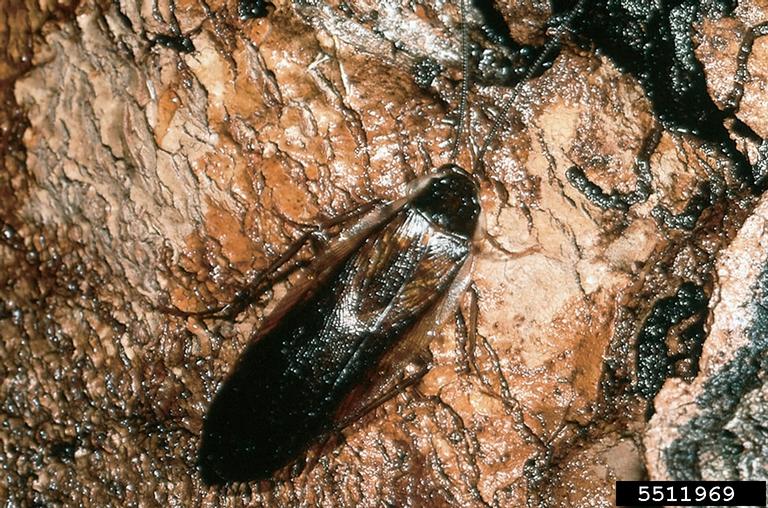
Termites
Formerly in their own order (Isoptera), termites now belong to the same order as cockroaches (Blattodea) due to molecular evidence that indicates that they may have evolved from within the lineage of cockroaches. Like their cockroach relatives, these organisms often have a negative reputation since a few species of termites can be major structural pests with a significant economic impact. That being said, less than 10% of the over 2750 species of termites have been recorded as pests. The rest of this group can have significant benefits due to their feeding biology. Termites are one of the few animals that can break down cellulose (due to symbiotic associations with microorganisms in their gut) which plays an important role in helping to decompose dead woody vegetation, especially in the tropics where termites are also most abundant.
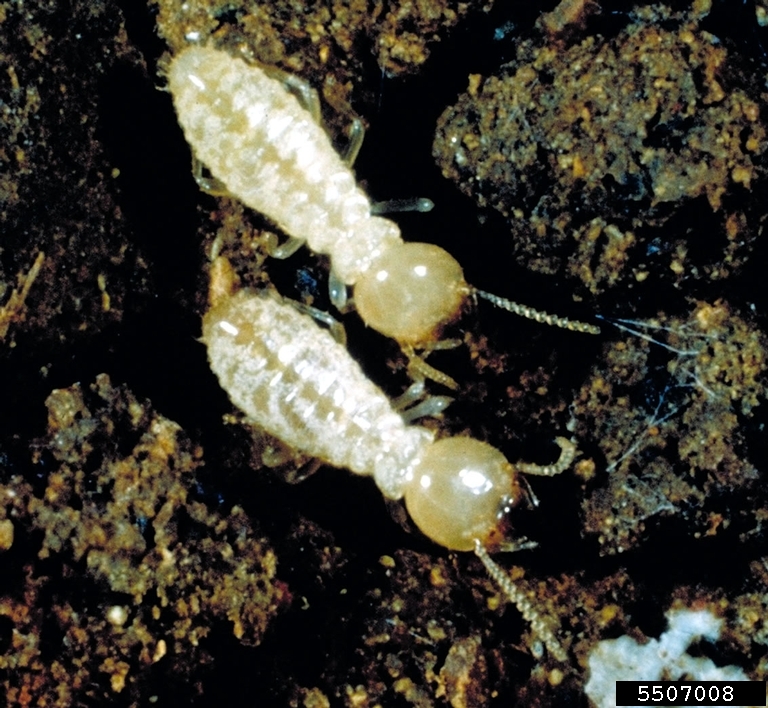
Springtails
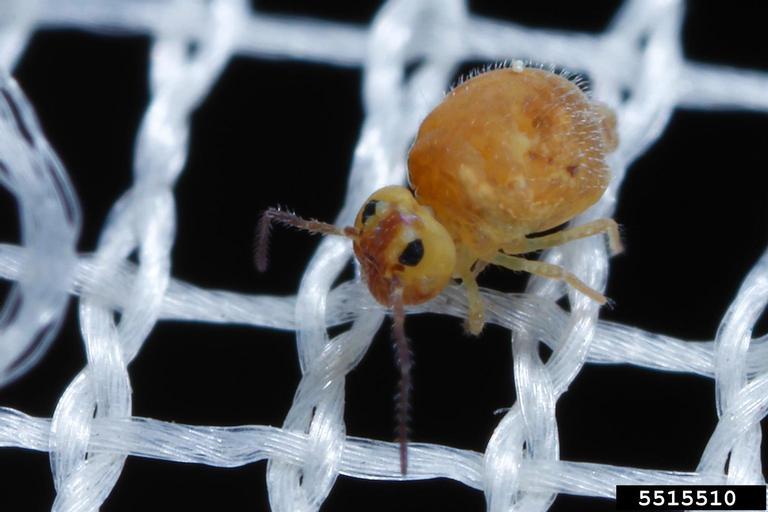
Springtails (Order: Collembola) are a group of impossibly adorable hexapods (six-legged organisms) but they are not considered insects. These tiny critters are found in moist environments and feed on decaying organic matter, decomposing plant materials, and fungi. They are called springtails because many in this group have a forked structure (furcula) folded under their abdomen that they can deploy to flick them upwards. If you haven’t yet seen this in action, I would strongly encourage you to check out some of the awesome YouTube videos that showcase this very cool function. These organisms are harmless to people and pets, and can easily be managed in indoor settings by reducing the moisture. Some of the most famous springtails include snow fleas which are noticeable tiny creatures aggregating on top of snow on warm sunny days.
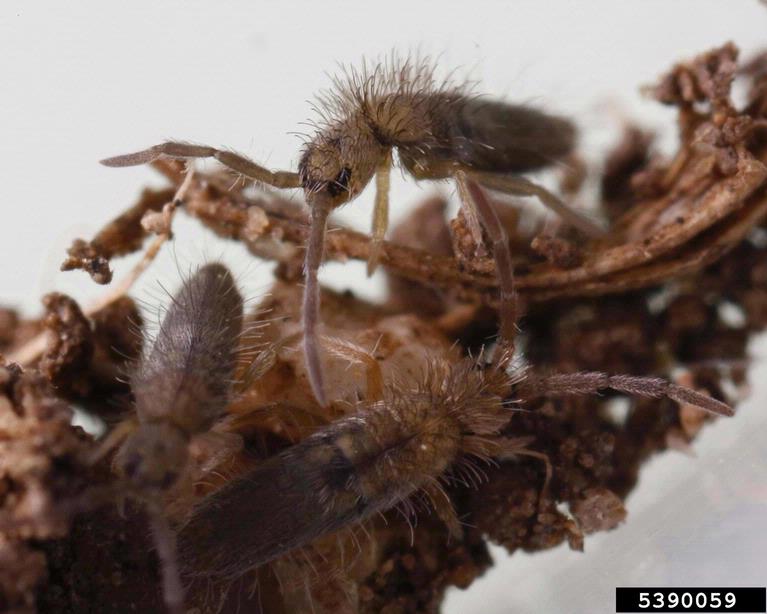
Isopods
Isopods (Order: Isopoda) are an order of Crustaceans that contain both aquatic and terrestrial organisms called woodlice. Of the nearly 10,000 species found worldwide about half of them are terrestrial. More affectionately referred to as pill bugs or roly-poly bugs (due to the fact that many can roll into a ball when disturbed), every child and adult has likely experienced these land isopods in an outdoor setting. They can be found in moist and dark environments such as under logs, rocks, and leaflitter. Like termites, Isopods also have symbiotic microorganisms which allow them to digest cellulose. As they break down decaying vegetation, they help improve soil quality, and make nutrients available for plant growth.
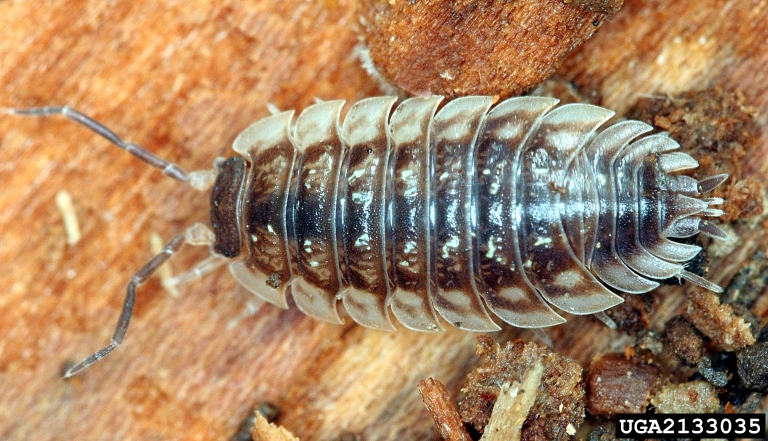
Millipedes
Millipedes (Class: Diplopoda) are a familiar and easily recognizable garden companion for a lot of us. These many-legged arthropods can be distinguished from their carnivorous cousins (Centipedes, Class: Chilopoda) by the number of legs per body segment. Where centipedes have 1 pair of legs per body segment, millipedes have 2 pairs (4 legs) per segment. Unlike their name suggests, they do not have 1000 legs, but a majority of the nearly 10,000 estimated species of millipedes fall within the range of 40 to 400 legs. Like many nutrient cyclers, they are found in damp environments where they feed on decaying vegetation and are important in making nutrients available to primary producers in the landscape.
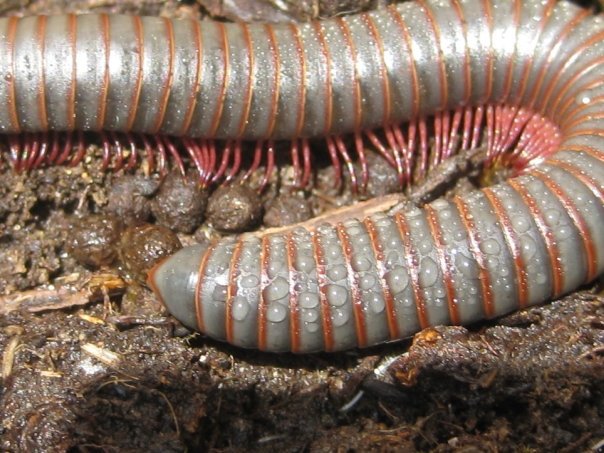
Mites
Mites (Subclass: Acari) contain a variety of organisms that include predators and decomposers. The estimated 50,000 species of mites worldwide are fairly understudied with scientists pointing towards a potential million species that have yet to be described in this group. Oribatid mites (Order: Oribatida) in particular are key detritivores found in the top layers of soil. According to a SARE publication, they are so abundant, that a 100 gram sample of soil can contain as many as 500 individuals within 100 different genera. In fact, one of my first arthropod-related jobs was working as a lab technician on a subarctic soil mite biodiversity study where I had to sift through soil samples and photograph thousands of these nearly microscopic mites. These tiny ‘microarthropods’ are critical in breaking down leaflitter into smaller pieces which can then be further decomposed by smaller organisms. They also stimulate microbial activity by dispersing bacteria and fungi, which plays a very significant role in soil turnover.
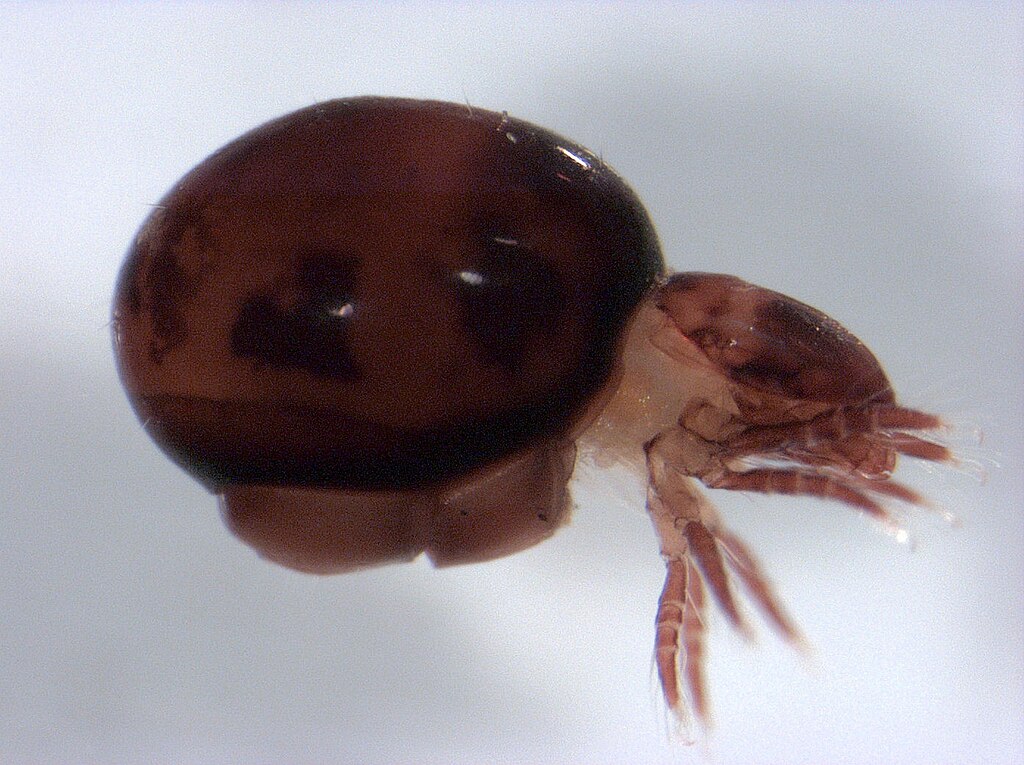
There are many other groups of decomposers that can be found in a variety of different arthropod classes and orders but, unfortunately, the information on this topic is not as easy to find as that on pollinators and natural enemies. Although it is not a very glamorous job nutrient cyclers are critical in maintaining a healthy ecosystem by breaking down waste (such as feces, carcasses, and dead vegetation) and improving soil structure, function, and nutrient availability either directly or indirectly through their various biological functions. I hope you enjoyed learning about them as much as I did, and I especially hope that you will consider the various roles that arthropods play within their ecosystems the next time you see a familiar or unfamiliar critter in your gardens.
Resources:
Losey, J.
E., & Vaughan, M. (2006). The economic value of ecological services
provided by insects. Bioscience, 56(4), 311-323.
https://academic.oup.com/bioscience/article/56/4/311/229003
Decomposer
insects (By: Galente and Marcos-Garcia):
https://entnemdept.ufl.edu/capinera/eny5236/pest1/content/03/2_decomposers.pdf
Burying
Beetles:
https://entomology.umn.edu/burying-beetles
Dung
Beetles:
https://extension.umaine.edu/blueberries/factsheets/insects/194-beneficial-insect-series-3-dung-beetles/
Sap Beetles:
https://extension.umn.edu/yard-and-garden-insects/sap-beetles
Blow Flies
and Flesh Flies:
https://yardandgarden.extension.iastate.edu/encyclopedia/blow-and-flesh-flies
Wood
cockroaches:
https://extension.psu.edu/wood-cockroaches
Springtails:
https://mdc.mo.gov/discover-nature/field-guide/springtails
Isopods:
https://mdc.mo.gov/discover-nature/field-guide/pillbugs-sowbugs-land-isopods
Millipedes:
https://digitalcommons.usu.edu/cgi/viewcontent.cgi?article=2345&context=extension_curall
Oribatid Mites:
https://www.sare.org/publications/farming-with-soil-life/mesofauna-arthropods/